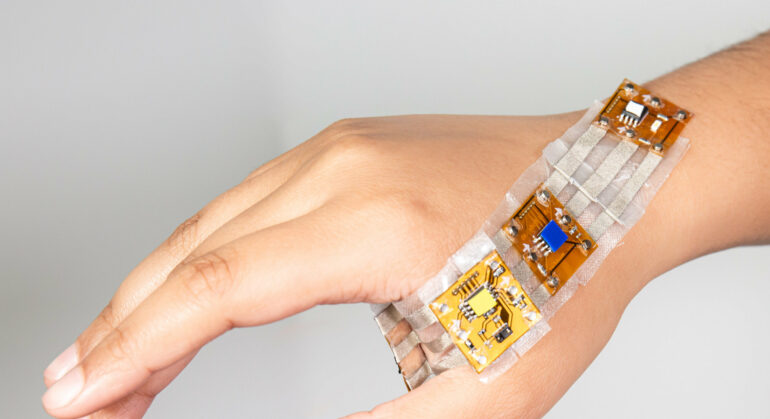Smartphones may become obsolete with computing that occurs on your skin through wearable technologies. Some people refer to this technology as “smart tattoos,” which are an outgrowth of existing wearable technologies.
On-skin computing has long been a hurdle because of worries about durability and comfort. According to TechXplore, a team of scientists from Cornell’s Hybrid Body Lab has created a “reliable, skin-tight interface” that is readily connected and disengaged.
According to its designers, the technology might be utilised for a number of purposes, including health monitoring and fashion. Pin-Sung Ku, the lead author of the research “SkinKit: Construction Kit for On-Skin Interface Prototyping,” claims that they’ve “finally sorted out a lot of the technical issues.”
Making Lego-like smart tattoos
They created “smart tattoos” using a modular method to “make them as simple as assembling Legos,” according to Cindy Kao, the study’s principal author.
SkinKit is primarily designed for users with little to no technical experience. Kao spoke about how many cultures encouraged them to adopt this Lego approach. “We believed it was really quite vital to give more people a voice in deciding what these smart tattoos should accomplish,” Kao continued.
The team’s “skin cloth” is made by combining temporary tattoo paper, silicon textile stabiliser, and water to form a multi-layer thin film. The product is reusable because to its tessellated design.
The detachable design also allows consumers control, since they may pick which sensors to utilise on certain days. SkinKit was tested on nine STEM-experienced volunteers who constructed the device during a 90-minute session. Following that, two-day research with 25 participants with STEM and design backgrounds was conducted.
The 25-person study resulted in the development of several devices, including temperature sensors to detect fever, a device that assists people in maintaining social distance, a notification sensor that vibrates whenever a vehicle approaches a runner, and another device for the blind that vibrates when the wearer is about to collide with an object.
There are several potential uses for “smart tattoos,” including fashion and sports training.

